
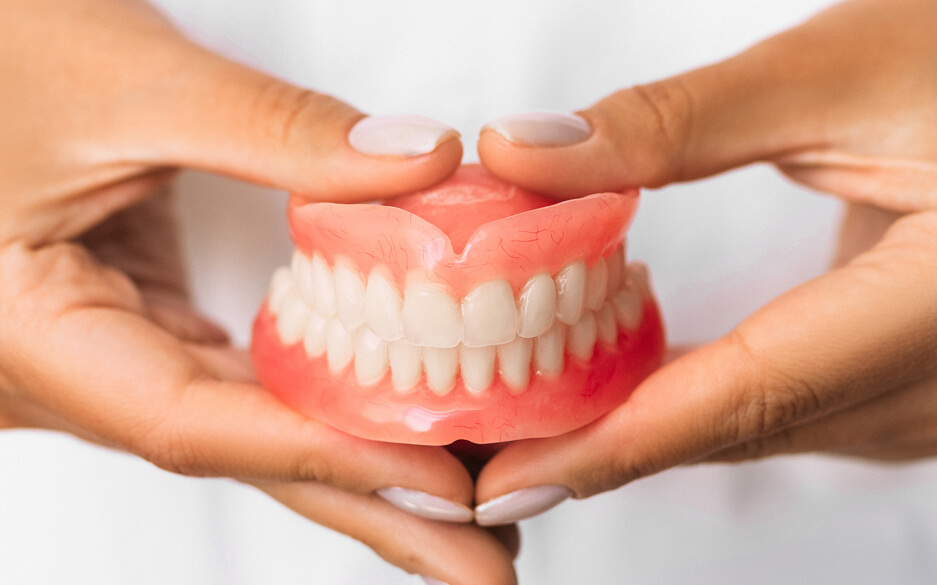

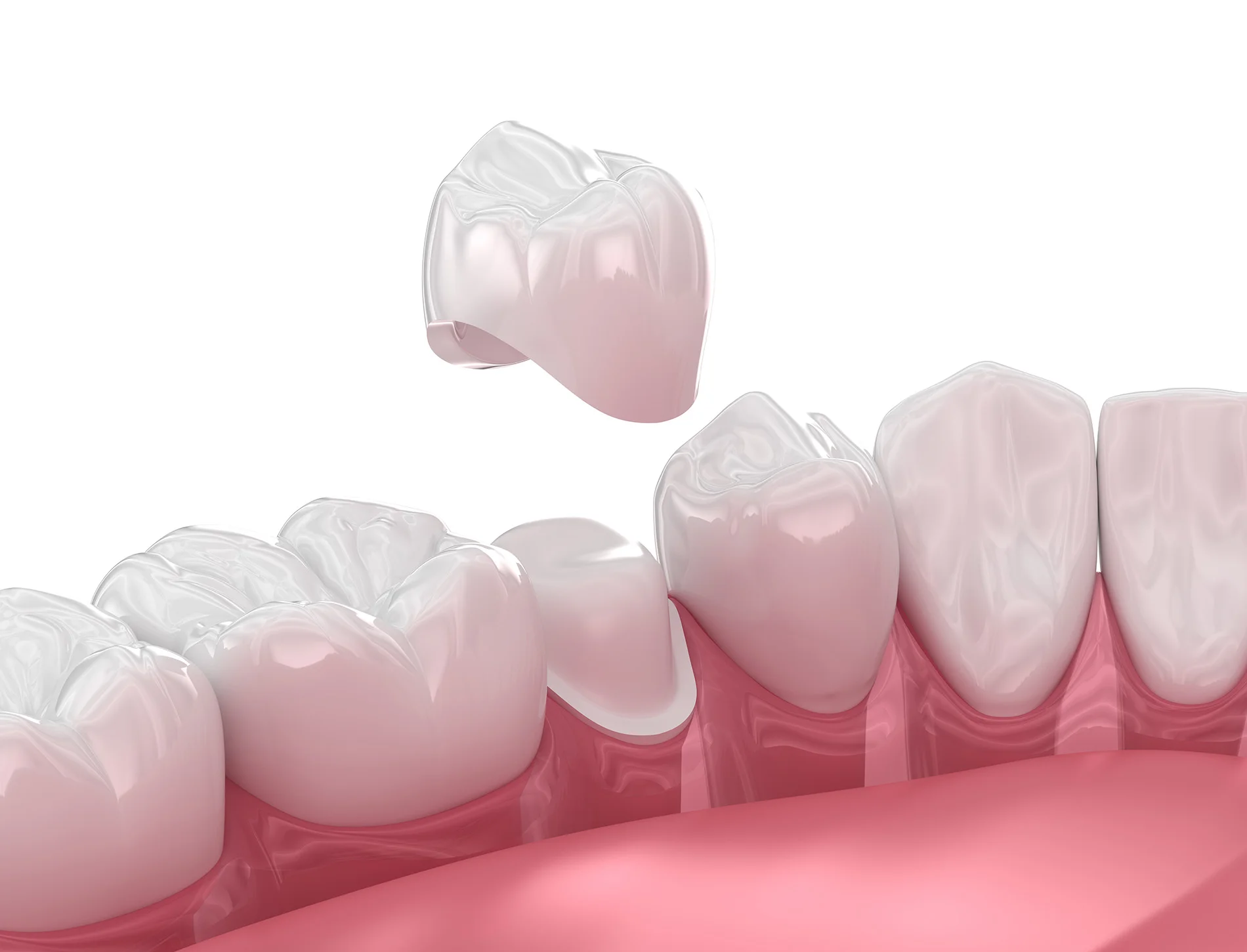
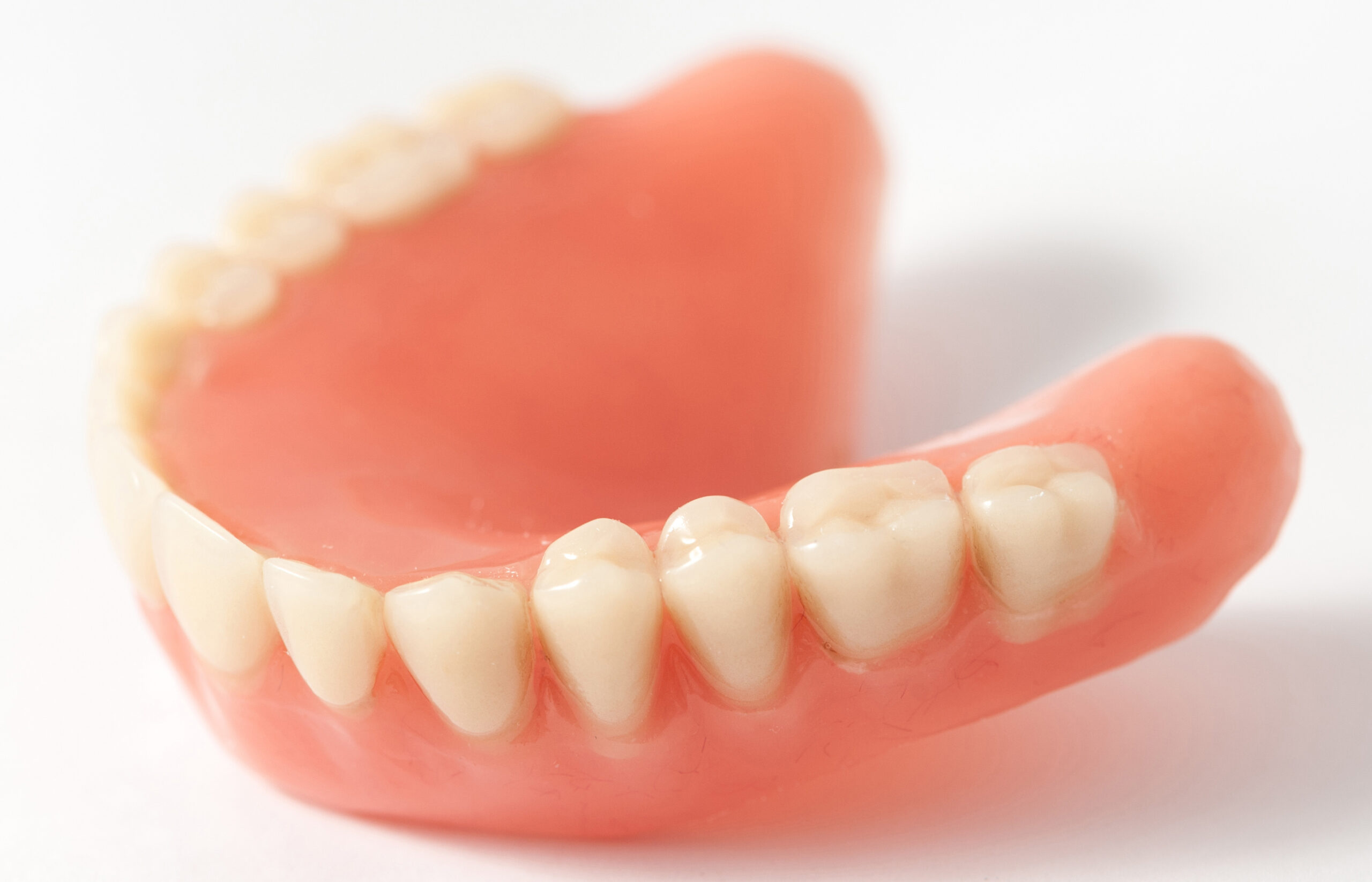
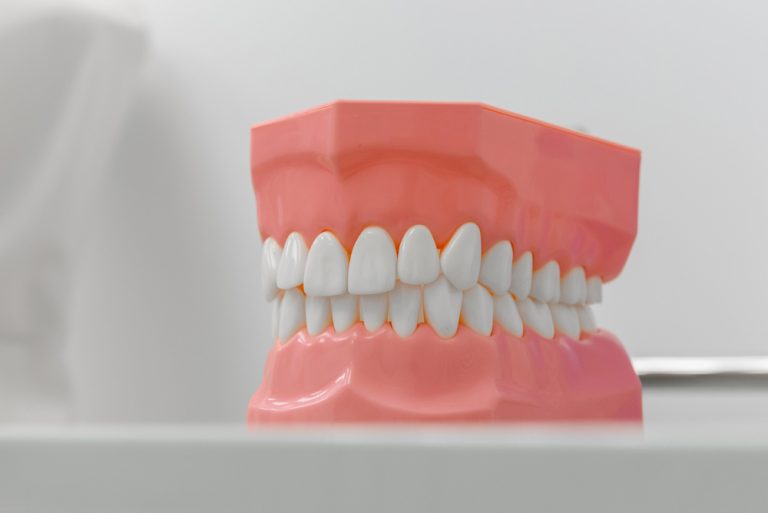
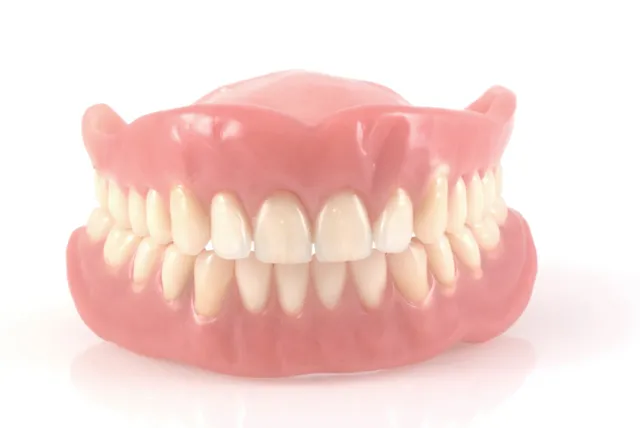
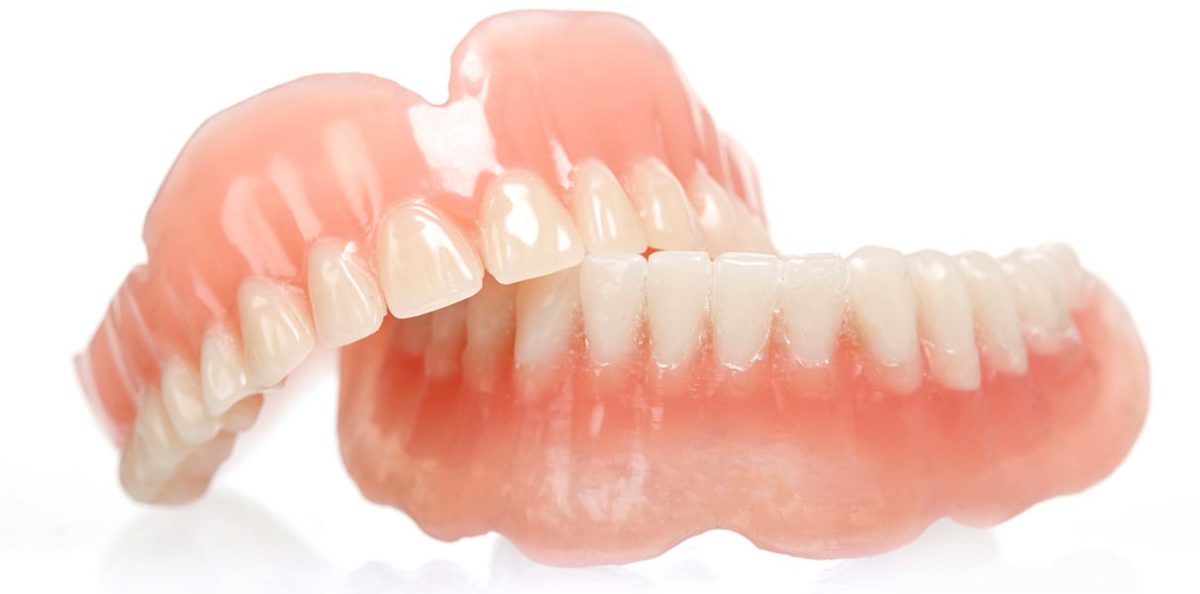
Prosthodontic Treatment
Prosthodontic treatment is a branch of dentistry focused on designing, creating, and fitting artificial replacements for missing teeth and other oral structures. The goal is to restore function, improve appearance, and ensure comfort for the patient. This can involve a variety of different approaches depending on the specific needs and circumstances of the individual.
Benefits of Prosthodontic Treatment
- Restored Function: Allows for normal eating, speaking, and chewing.
- Improved Aesthetics: Enhances the appearance of the smile and facial structure.
- Enhanced Comfort: Reduces discomfort or issues caused by missing teeth.
- Support for Adjacent Teeth: Prevents shifting or damage to remaining teeth.
Our Prosthodontic Treatments
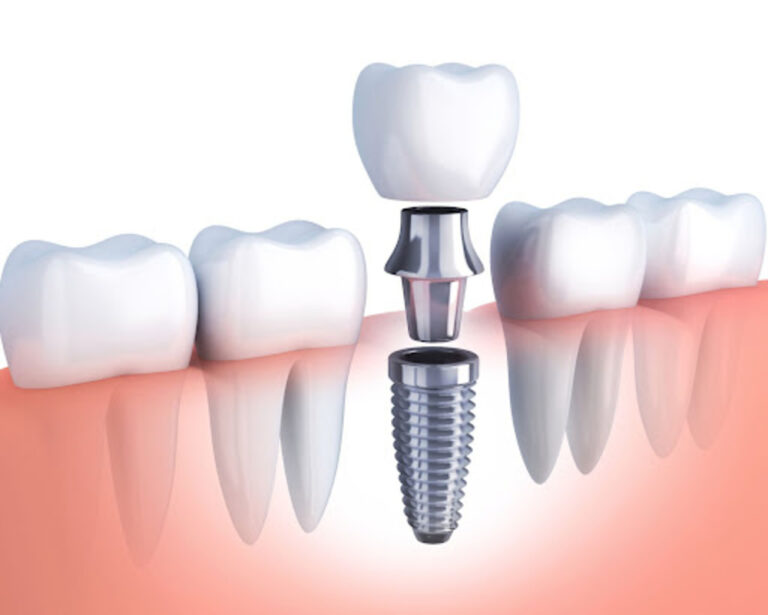
Dental Implants
Dental implants are a modern and effective solution for replacing missing teeth. They are artificial tooth roots, typically made of titanium, that are surgically placed into the jawbone to support a replacement tooth or bridge.
When Are Dental Implants Needed?
Missing Teeth: One or more missing teeth due to injury, decay, or disease.
Uncomfortable Dentures: Providing a more stable and permanent solution than traditional dentures.
Bone Loss: Preventing bone loss that occurs after tooth loss.
Benefits of Dental Implants
Durability and Longevity: Can last many years, often a lifetime, with proper care.
Improved Functionality: Restore normal chewing and speaking abilities.
Aesthetic Appearance: Look and feel like natural teeth. Bone Preservation: Prevent bone loss and maintain facial structure.
Stability: Provide a stable and secure foundation for replacement teeth.
When Are Dental Implants Needed?
Missing Teeth: One or more missing teeth due to injury, decay, or disease.
Uncomfortable Dentures: Providing a more stable and permanent solution than traditional dentures.
Bone Loss: Preventing bone loss that occurs after tooth loss.
Benefits of Dental Implants
Durability and Longevity: Can last many years, often a lifetime, with proper care.
Improved Functionality: Restore normal chewing and speaking abilities.
Aesthetic Appearance: Look and feel like natural teeth. Bone Preservation: Prevent bone loss and maintain facial structure.
Stability: Provide a stable and secure foundation for replacement teeth.
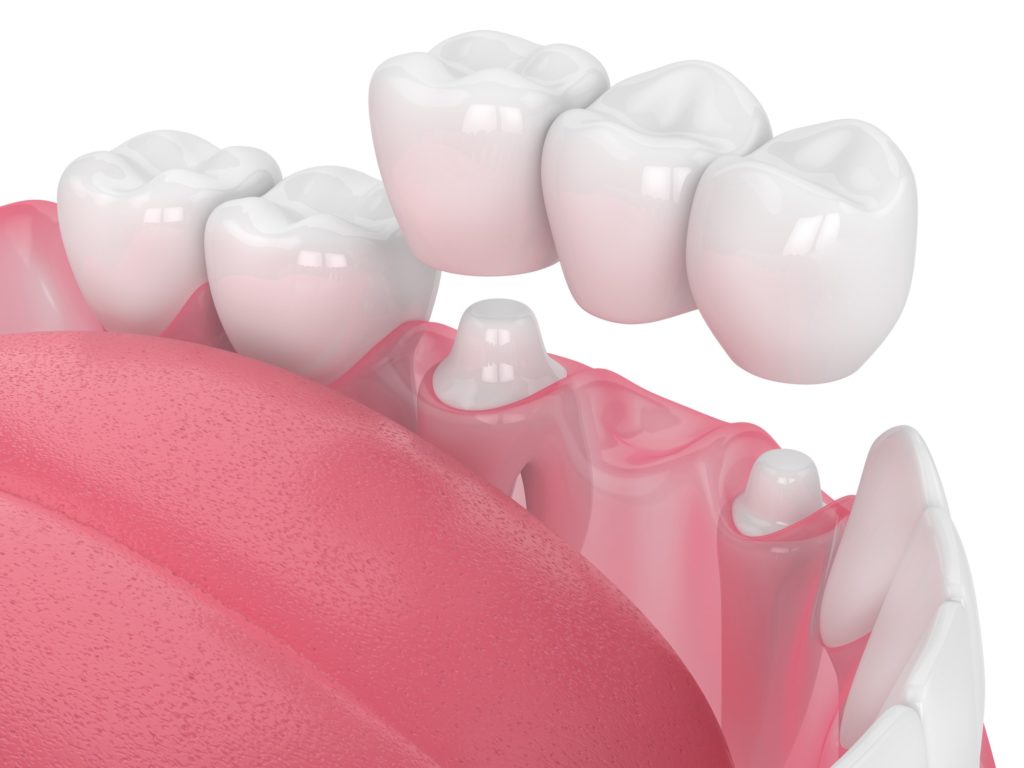
Crowns and Bridges
Dental crowns and bridges are restorative treatments used to repair damaged teeth and replace missing teeth. These procedures help restore the function, strength, and appearance of teeth, contributing significantly to overall oral health.
A dental crown is a tooth-shaped "cap" that is placed over a damaged or decayed tooth. Crowns cover the entire visible portion of the tooth above the gum line, restoring its shape, size, strength, and appearance.
A dental crown is used to replace one or more missing teeth by spanning the gap created by the missing teeth. A bridge is anchored to the adjacent teeth (abutment teeth) with crowns, and a false tooth (pontic) fills the gap.
Benefits of Crowns and Bridges
Restored Function: Improves chewing and speaking abilities.
Aesthetic Improvement: Enhances the appearance of the smile.
Durability: Long-lasting solutions with proper care.
Stability: Prevents remaining teeth from shifting out of position.
Dental crowns and bridges are essential restorative treatments that can significantly enhance dental health, function, and aesthetics. By addressing damaged or missing teeth, they help maintain the integrity of the oral cavity and improve the patient's overall quality of life.
A dental crown is a tooth-shaped "cap" that is placed over a damaged or decayed tooth. Crowns cover the entire visible portion of the tooth above the gum line, restoring its shape, size, strength, and appearance.
A dental crown is used to replace one or more missing teeth by spanning the gap created by the missing teeth. A bridge is anchored to the adjacent teeth (abutment teeth) with crowns, and a false tooth (pontic) fills the gap.
Benefits of Crowns and Bridges
Restored Function: Improves chewing and speaking abilities.
Aesthetic Improvement: Enhances the appearance of the smile.
Durability: Long-lasting solutions with proper care.
Stability: Prevents remaining teeth from shifting out of position.
Dental crowns and bridges are essential restorative treatments that can significantly enhance dental health, function, and aesthetics. By addressing damaged or missing teeth, they help maintain the integrity of the oral cavity and improve the patient's overall quality of life.

Denture
Dentures are removable dental appliances that replace missing teeth and surrounding tissues. They are custom-made to fit the patient’s mouth and provide a functional and aesthetic solution for tooth loss.
Types of Dentures
1. Complete Dentures
Full Dentures: Replace all teeth in the upper or lower jaw.
Immediate Dentures: Placed immediately after teeth removal, allowing the patient to have teeth during the healing period.
2. Partial Dentures
Removable Partial Dentures: Consist of replacement teeth attached to a gum-colored plastic base, connected by metal framework to hold the denture in place.
Fixed Partial Dentures (Bridges): Permanently attached to adjacent natural teeth or implants.
Types of Dentures
1. Complete Dentures
Full Dentures: Replace all teeth in the upper or lower jaw.
Immediate Dentures: Placed immediately after teeth removal, allowing the patient to have teeth during the healing period.
2. Partial Dentures
Removable Partial Dentures: Consist of replacement teeth attached to a gum-colored plastic base, connected by metal framework to hold the denture in place.
Fixed Partial Dentures (Bridges): Permanently attached to adjacent natural teeth or implants.

Full Mouth Rehabilitation
Full Mouth Rehabilitation, also known as full mouth reconstruction or restoration, involves rebuilding or restoring all of the teeth in both the upper and lower jaws. This extensive process combines multiple dental procedures to improve the function, health, and appearance of the patient's teeth and gums.
When Is Full Mouth Rehabilitation Needed?
Severe Dental Trauma: Extensive damage due to accidents or injuries.
Extensive Tooth Decay: Multiple decayed teeth requiring comprehensive treatment.
Worn Teeth: Teeth severely worn down from grinding (bruxism) or acid erosion.
Congenital Defects: Birth defects affecting the teeth and jaws.
Periodontal Disease: Advanced gum disease leading to significant tooth and bone loss.
When Is Full Mouth Rehabilitation Needed?
Severe Dental Trauma: Extensive damage due to accidents or injuries.
Extensive Tooth Decay: Multiple decayed teeth requiring comprehensive treatment.
Worn Teeth: Teeth severely worn down from grinding (bruxism) or acid erosion.
Congenital Defects: Birth defects affecting the teeth and jaws.
Periodontal Disease: Advanced gum disease leading to significant tooth and bone loss.

We are serving Kolhapur since 2005.
We have been trying to bring SMILES on the faces of our patients from last 19 yrs.
We believe that A Beautiful Smile & improved self image are some of the benefits of Dental Treatment.
Clinic